Here's a step-by-step guide that will get your bike clean, refreshed and looking like new — and running much better — in less than an hour.
A five-minute hose down and application of lube straight after your ride will help keep your bike running smoothly, if not showroom shiny. But nobody's perfect - least of all us — so here's how to shift serious grime.
Tools you'll need
1. Bucket
2. Very hot water
3. Brushes and sponges
4. Old toothbrush
5. Old spoke or paper clip
6. Old spoke
7. Degreaser/liquid bike cleaner
8. Grease
9. Chain lube
10. Rags
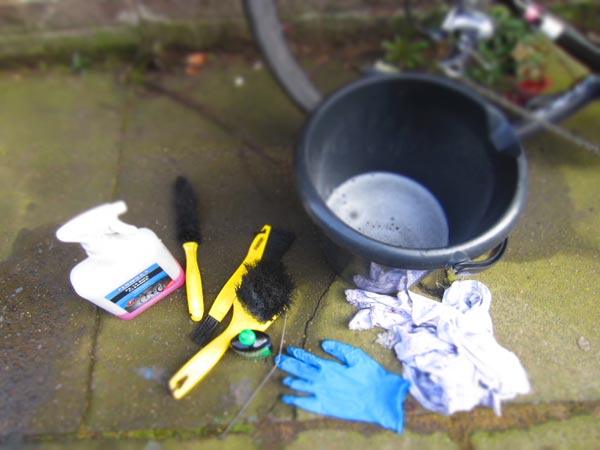
Scrub the chain
The chain is the most important part of the transmission. The first step to cleaning it is to use hot water - wearing rubber gloves will help you use hotter, more effective, water. Add regular washing-up liquid to your bucket of water and allow it to foam up.
With the chain in the biggest gear, apply the mixture vigorously using a stiff bristle scrubbing brush. You'll see a bright, shining chain emerge.
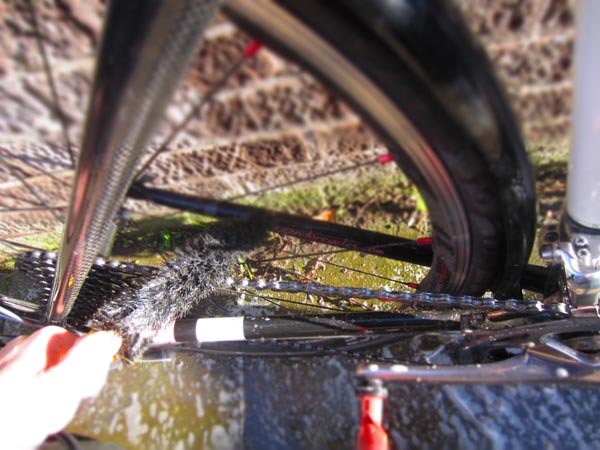
Degrease the chain
With the chain free from dirt, apply a biodegradable degreaser to the chain and allow it to soak into all the links. This will remove any debris and sticky residues you can't see, and make for a free-running chain.
Rotate the cranks backwards a few times to get the degreaser right into the links. Allow to drip-dry, or wash off with clean water.
Scrub front mech
Front mechs always suffer from neglect. They're hard to access and are often jammed full of crud, and have pivots drier than a Jacob's Cracker. The first thing you can do to get your front mech swinging happily again is to apply steaming soapy water. Use a small toothbrush to get right into the parallelogram and underneath the band.

Wipe front mech
Give the mech a good going over with the rag. Use a thin strip of rag to thread though the body of the front mech - this allows you to floss the body. Don't overlook the inside of the front mech cage, as these get pretty grubby from rubbing the chain all day. A couple of minutes and you should have a gleaming front mech.
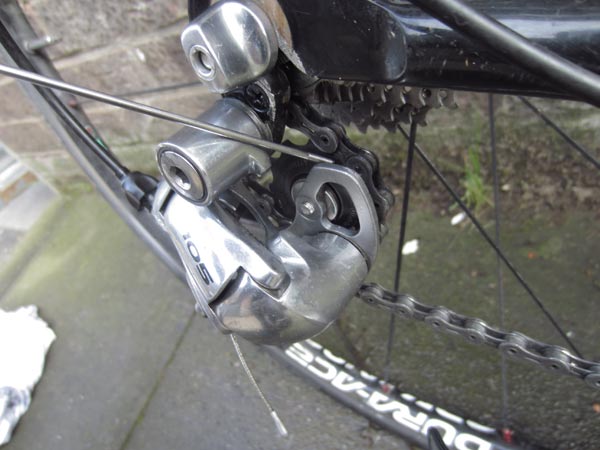
Scrape out rear mech
There's no point having a free-running chain if the jockey wheels of your rear mech are bunged up. Use an old spoke or the blade of a thin, flat-bladed screwdriver to carefully hook out any old oily gunge that's trapped between the jockey wheels and the mech arm side plates.
Scrub Jockey Wheels
With the serious grime gone, use a little degreaser and an old toothbrush to scrub the jockey wheels (not forgetting the insides of the mech arm). It's possible to unscrew the jockey wheels from the mech arm, but we don't recommend you do so.
De-Gunk Rear Sprockets
The rear sprockets are the final port of call on this bicycle maintenance mystery tour. They're full of technology to help faster shifts, but also full of grease. Pick the worst bits. You'll be surprised what hides in those tight spaces, even on expensive.
Scrub Rear Sprockets
Get the hot soapy water on them and get scrubbing with a brush. Really stubborn grot can be shifted with a dose of degreaser and another hit with the scrubbing brush. Getting to the backs of the sprockets can be tricky, but it's really worth preserving as the cleaner it is the less grime with stick.
Wipe Rear Sprockets
Give the sprockets some flossing with your strip of rag. This helps dry the sprockets, and also buffs away any outstanding marks. The cleaner you can keep your sprockets, the faster they'll shift and the longer they'll last. Dirt acts like a grinding paste when in contact with any part of your transmission, so get rid of it.
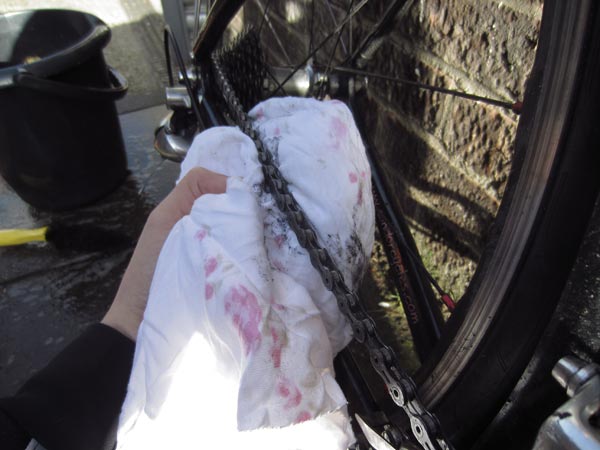
Wipe the chain
Use a soft rag to wipe the chain completely clean - you'll be surprised what still comes off a clean-looking chain. You're trying to massage the links, moving them through as wide a range of movement as possible - this helps expose the sections of link normally hidden from view.

Lube the chain
Apply lube only when the chain is clean. Use a dripper bottle, because it's easier to apply accurately and with minimum wastage. Coat the whole chain, spinning the cranks to force the lube into the links. That's where lube is most useful - not coating the outside plates, as many believe. Wipe excess lube away with a rag.
Lube Jockey Wheels
Re-lube the jockey wheels. They really only need the very lightest touch of lube, as they'll pick up enough from the chain through use. Remember these little wheels attract a lot of dirt, and with lube being sticky, it doesn't pay to make matters worse by overdoing it. Wipe the excess away with a rag. They should look dry.
Lube Front Mech
Use the lube dropper bottle to apply drops of lube to all the pivots on the front mech. These take a lot of load, and can use all the help you can give them to remain mobile. Shift the mech into the smallest chainring and then work the parallelogram with your fingers to get the lube worked in.
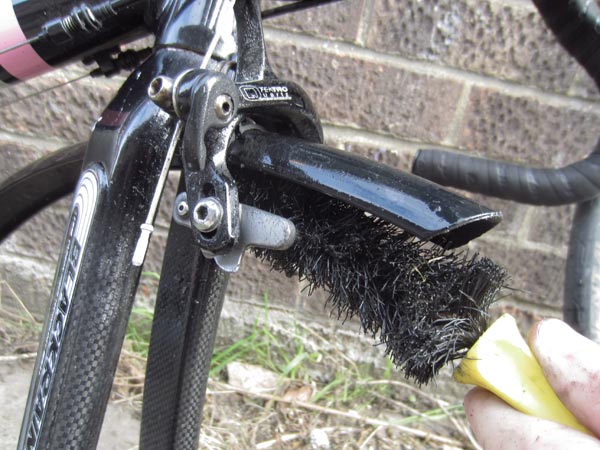
Clean the brake pads
Grit builds up on the brake pads and on the rim, the grit acts as a sandpaper and can accelerate the wear on the brake pads down and also the braking surface of the wheels. Dig out any small pieces of aluminium or stone that may have dug into the brake block.
Take the front and rear wheels out of the frame and with hot soapy water scrub the brake pads. Use a clean cloth to remove excess water. The rag become quite stained from the aluminium dust worn onto the pads.
The same principles apply to a single speed bike, only you don't have to clean out the gears.